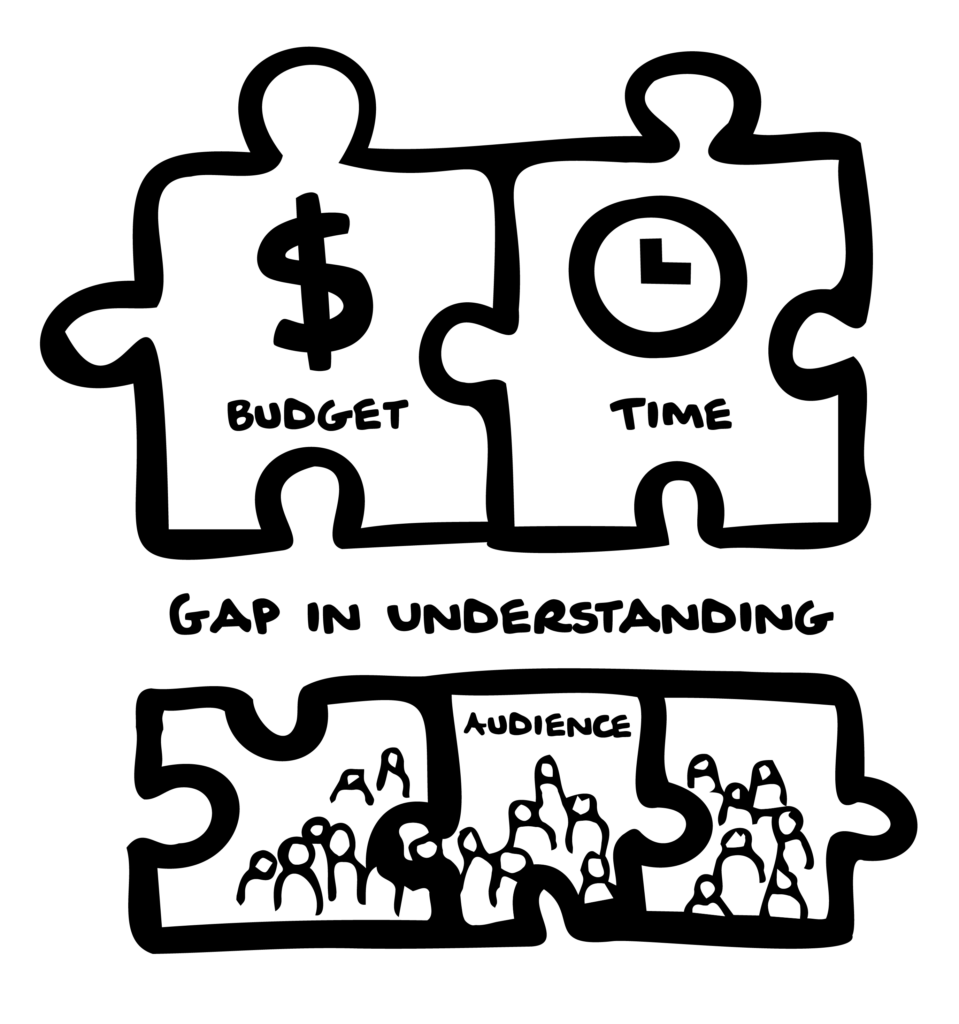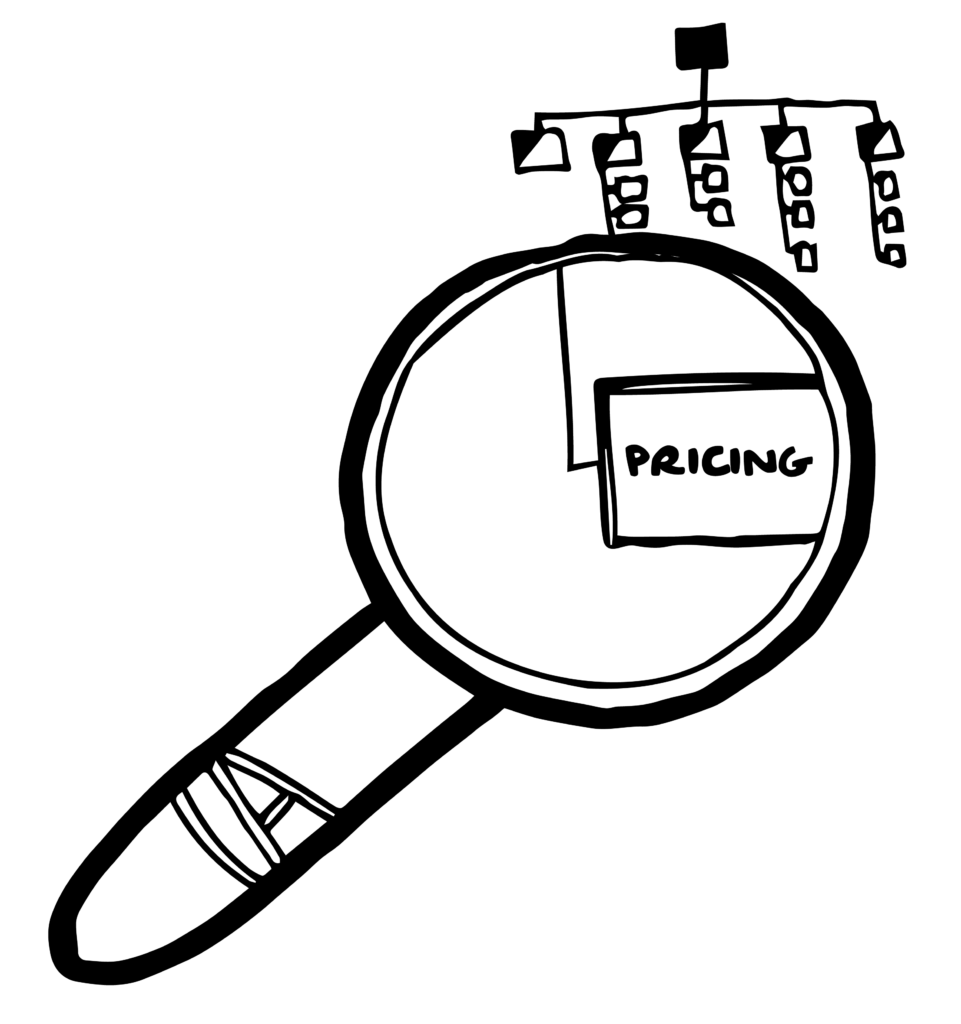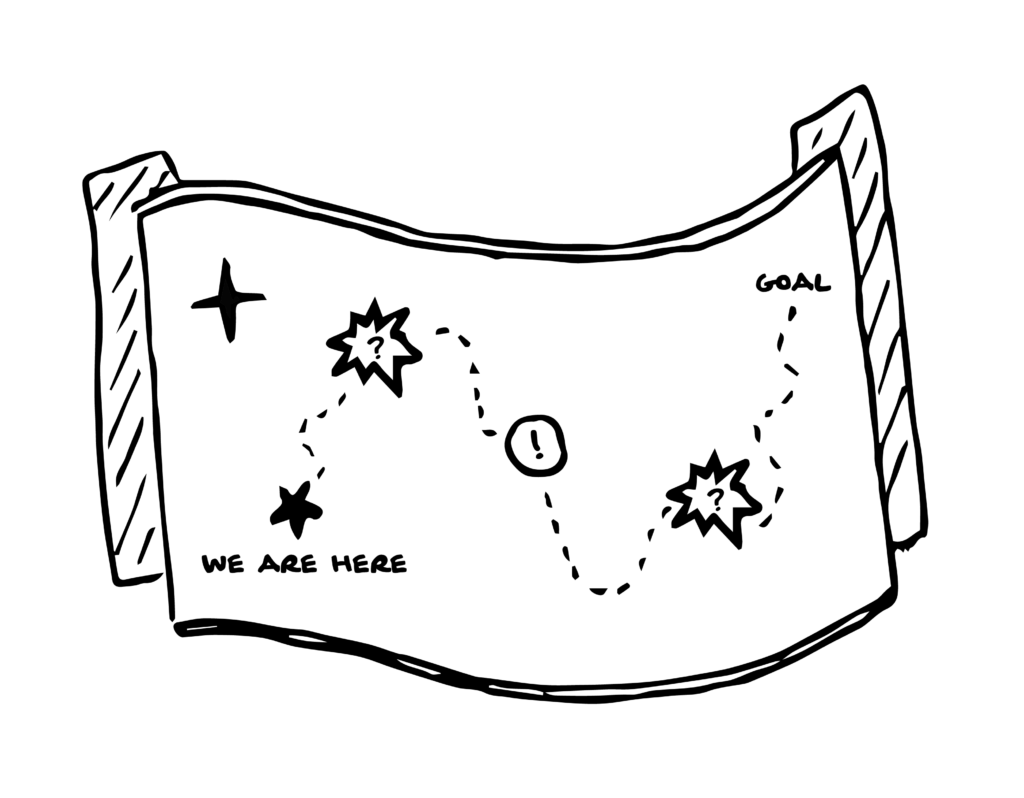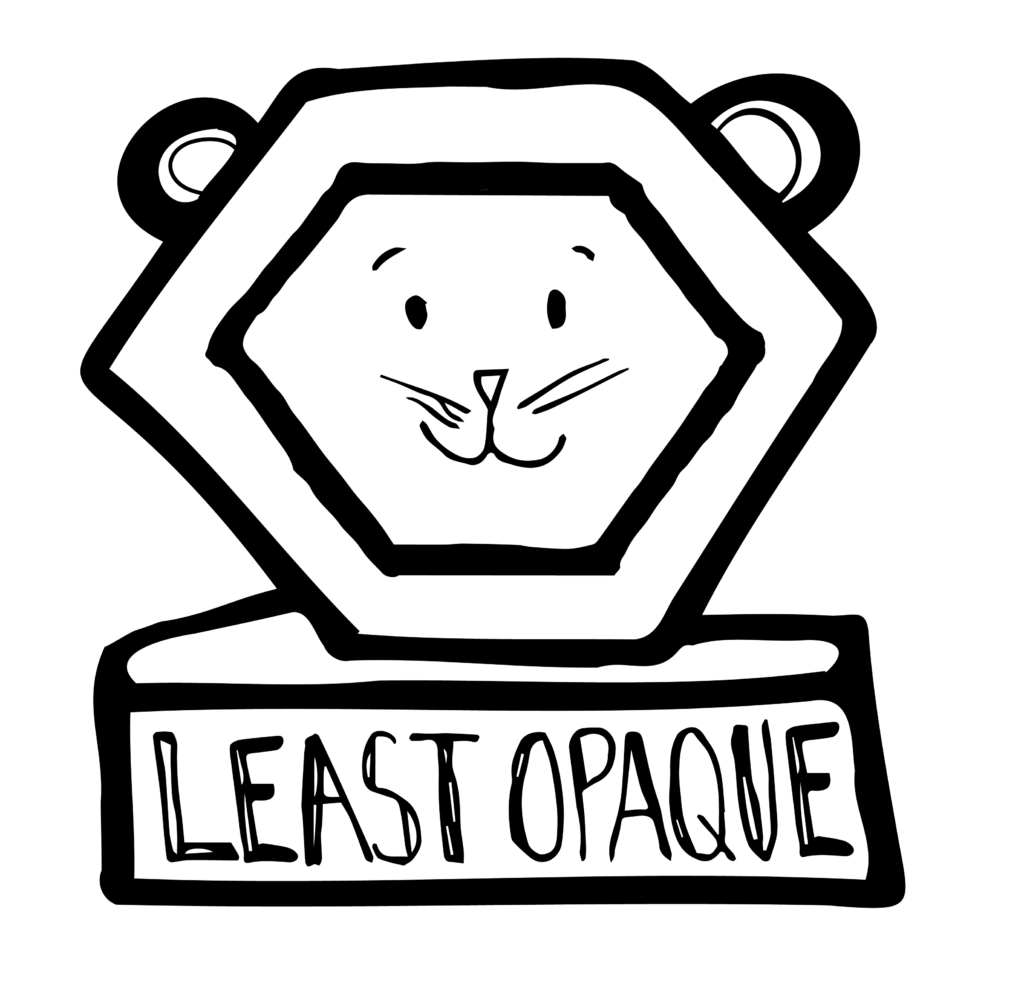IA for Marketing
Marketing Campaigns Fail When IA is Ignored
When I started my blog Abby the IA in 2010 I had no idea that ten years later I would be running a small business leaning on the network that the brand name I made up in my bedroom had grown in the more than a decade since.
I would also admit freely that there is a special kind of pain when trying to branch out of the internet when operating a business via a pseudonym-handle. And that I still have plenty of people who think that my last name is ‘Theia’ as a result of inconsistent use of spaces across platforms. As a twenty-something, and baby-business-person exploring the digital world as it was evolving, I did my best.
In 2020 as my side hustle started to shift into my full time business I had to take a hard look at how and where marketing fit into my business.
When I was working in advertising agencies and as a consultant working directly with brands I started to have a nagging suspicion that unconsidered information architecture was the villain in many marketing horror stories. I figured it was a hunch worth following and I am glad that I did, both as an information architect and as a small business owner who plays marketer most days.
I found an article published by Forbes called “8 Common Reasons Why Marketing Campaigns Fail” — and if I may thank the author, John Keehler, for this beautifully-tight framework o’ fails with which to attach my hypotheses about how neglecting core principles of information architecture lead to marketing fails all the dang time.
Forbes’ 8 Reasons Marketing Campaigns Fail:
- Not Enough Budget
- Misguided Objectives
- Unclear Positioning
- Weak, Unclear Calls To Action
- Customer Experience Barriers
- It Doesn’t Stand Out
- Relying On A Single Channel
- Unrealistic Expectations
As a seasoned information architect who has spent a ton of energy and time over the last two decades talking with businesses about the IA implications of their business, I could have easily re-titled this list:
8 Signs You Need to Think About IA
So I did just that. In the below article I reframe each fail-point the original author notes to talk about the prominence of campaign failure caused by brands and marketers neglecting their own information architecture potential.
#1 “Not enough budget” is often code for “We don’t have time to think this through the IA part”
Whether it is not including real customers in research, or not having the time to slow down in documenting a technical solution — marketing campaigns fail all the time because they don’t prioritize the information architecture part of the campaign.
Information architecture is deciding how to arrange the pieces to make sense as a whole.
If you ever feel like you don’t have the budget to meet that bar, pack up your Gantt charts and strategy decks now — they won’t matter, and you are about to learn why execution without proper understanding is usually more expensive and takes more time (to fix later.)

When I was making plans to move from a corporate job to writing full time I had to take a long and hard look at my website, or the shambles of what my website had become. As an information architect myself I also had to admit I was in over my head, because I was far too close to the problem to take care of it myself.
I hired an IA on contract (shout out Clair Rock) to work on the redesign and migration and it was some of the best money I ever spent on my business.
Could I have relaunched my brand having not done that hard work, sure. Would I have had it done sooner? Absolutely. Would it have been a social media slaughter of customer issues and bug complaints instead of a stable and professional celebration of my work, there is no doubt in my mind.
#2 Attention to IA prevents “Misguided Ambiguous Objectives”
I want to introduce a word-swap to the author’s second point of failure to better describe the reality of many marketing campaigns I have helped to not fail. Campaigns fail under “ambiguous” objectives.

I can assure you that people thoughtfully measuring baselines, researching with customers and setting realistic, measure-able goals are not failing. At least not without learning something from that failure that they can use to improve their next campaign.
The ones who are failing are the ones that state an objective as if it is a declaration of objective reality instead of a negotiation of subjective reality.
If you are ever working on a campaign where you aren’t quite sure how success will be measured, you are speed walking towards this kind of failure.
Talking (while speed walking) about objectives often stops at the front door of a brand’s high level goals, and more seldom ventures to the basement of their key metrics for success, current baselines collected or instrumentation of useful measurement of the right metrics.
It is not that the objectives are misguided, it’s that they are too flimsy to plan on because they don’t (yet) have a reality backing them up.
When ambiguous objectives lack a way to determine metric-success or failure, the emotions of the marketers, their management and the media are all that’s really left. And no one should be measured on their bosses’ emotions nor what the media reports.
As a self employed solopreneur focusing on writing full-time, at first I was doing a lot of what I was called “operating without a baseline” — meaning I had so little experience in my new business model that I felt like I couldn’t set any goals just yet. Everything was very “wait and see” — which also meant that all I was left with was my emotions. And spoiler alert, this creative person alone with her emotions in a circumstance such as this is NOT good for business.
I decided to take a deeper look to find metrics I felt confident setting goals around, versus those that truly lacked the concreteness to set goals on. I also challenged myself to devise experiments that might help me establish the baselines or insights I needed to feel more confident in those more squishy metrics.
For my first year I focused on two metrics, subscription and use of unsubscribe to my email list. This felt like a direct thermometer of how my messages were being received by my audience — and while I couldn’t attach financial metrics to it just yet, this focus allowed me to develop a clear litmus for my priorities.
Everything could be run through this customer-centered filter. This helped to ground me in a season that felt particularly groundless.
#3 IA is clearly understanding how your offer is relevant to your audience
A hard reality of teaching information architecture is how contextual it is to get right. I have never seen two information architectures that are exactly the same. That means the only way to get IA right is understanding your audience and intention enough to position your brand or product successfully.
Whether it’s the words you use to describe the product, the stock photo you picked for the announcement email or the way the call to action was framed for a specific audience, your information architecture is how those pieces come together to deliver a message as a whole. How close that message is to your intention is entirely up to your audience’s interpretation.
I once worked with a SaaS company who was struggling to reach their target audience, who seemed to be getting confusing feedback about their price-point being the issue. What really turned out to be the issue was that the company had buried their pricing details deep into their website in an effort to not seem pushy.

Instead of not seeming pushy, they unintentionally made themselves seem inaccessible to their target audience. This is a great example of how even the smallest of IA details matters, especially in marketing.
#4 Lack of thoughtful IA leads to weak, unclear calls to action
When developing a funnel towards a transaction, clear calls to action are best devised like swingy doors of a saloon, not like locked safes that need passcodes for entry. When our calls to action are clear to the most amount of people they work the best. But too often we are tempted by the bite of the branded-label–bug.

One of the hardest lessons I have had to learn in my small business is to prioritize clear calls to action over cute, witty, pun-full, mystery meat labels that many people may miss.
As a writer I can have too much fun twisting marketing calls to action into fun, branded elements in my campaign only to miss the point of having these calls to action in the first place.
It’s a delicate balance to be clear, and also brand-aligned — but it’s possible, and required if you want to save your marketing campaign from what is now a premeditated failure. No pressure.
If anyone ever laughs at a call to action you wrote, think really hard (and test even harder) to make sure you aren’t trading a few laughs for successful completion of the intended task.
#5 IA helps us look up and down stream to anticipate customer experience (and other) barriers
When it comes to customer experience barriers, understanding your product or feature in context to the user’s real world is crucial. It is equally important to understand the up and down stream impacts and/or risks throughout the systems and ecosystems the thing you are making touches.

Let me tell you a completely hypothetical story that definitely didn’t happen at the agency where I worked fifteen years ago.
A small, scrappy, digital team was called in at the last minute to build a flash animation for an upcoming campaign of a well-known fried chicken restaurant’s newest product. The meetings that needed to be had with the client and creative happened and the thing was built and blessed for launch.
Here’s the twist. At no point did anyone warn the team that the campaign would not only include a very sweet free offer on their latest (and highly anticipated) product — it also had been set to appear on Oprah
Can you guess what happened?
Yep — just as anyone could have predicted the site went down and there were a ton of pissed customers who didn’t get their awesome chicken-fried-deal. While one simple question like “how will customers hear about this campaign?” could have prevented this from ever occurring.
This is one of those simple things that can easily spoil an otherwise beautiful campaign execution. And if the digital team in this case had any clue they would have been able to prepare to have the site ready for what I now refer to as Oprah-scale.
If you ever work on a campaign where the tone is “we will cross that bridge when we get to it” about the customer experience or you don’t know anything outside the bounds of the thing you are building in a larger campaign — you might be walking towards this kind of failure.
#6 Being thoughtful about defining your brand ensures you will stand out
This finding out of the eight is the biggest bummer to put into words, but I am doing it anyway. When it comes to being thoughtful about defining your brand in ways that make sense to real people, the bar is on the darn floor.

In my opinion people are hungry for companies that are taking themselves seriously when it comes to establishing and maintaining a brand.
What this means from an information architecture perspective is:
- Being serious about clarity, from your website navigation labels to your ethics
- Investing in long-term thinking when it comes to brand health and impact when making critical architectural decisions about what to call things or how to structure them
- Aligning incentives with your brand health across the organization
Businesses often start with a strong attempt at a brand, but if these three qualities aren’t built in from the start, it exponentially increases how hard it is to change later on.
If you are establishing a brand, be thoughtful. Be dogged about the details. And for goodness’ sake, make sure it’s clear to whomever you intend to reach. And if you manage or market a brand not reaching this bar, it’s never too late – and implementing the three points above can change the marketing game when done honestly and thoughtfully.
#7 The definition of ‘information’ means single-channel marketing does not exist
If I can get a tad bit academic for a few moments, I have a few terms I think marketers could use to help them be more thoughtful about their information architecture practice:
- Information is whatever is interpreted from a sequence or arrangement of things.
- Content is whatever is arranged or sequenced for interpretation.
- Mental Model is the map of everything we know or think that we each carry around and reference consciously and subconsciously all dang day
When someone encounters a marketing campaign, that marketing campaign is content that is interpreted (or ignored) resulting in information about that brand or product being added to that individual person’s mental model.

It gets stored right next to everything else they know or think about your product or your brand … or maybe about brands and products like yours. Or about their random, unique to them associations of your brand with other things that they know.
This means that all campaigns, regardless of the number of channels, are omnichannel. The messages that brands send about themselves are more like patches in a growing quilt than the billboard marketers often trick themselves into believing can be transported as is into the minds and hearts of real people.
If you find yourself planning on putting your campaign under a cloche for delivery straight into the minds of your users, watch out — you may be approaching a fail of catastrophic proportions.
#8 IA helps sets realistic boundaries
Information architecture practices help us to set expectations where they can be met, and then backed up with real, measurable results.
I find that when marketers have to become technologists these expectations can get grossly out of whack from what is possible. I also find that there are not enough technologists partnering with their marketers to bring up that baseline shared knowledge to a place where they can collectively reduce risk to their organization.
Often information architecture becomes the bridge process between these two groups of people:
- Folks who need a thing to be built
- Folks who build that thing
When negotiating the scope of a campaign the intention, resources and capabilities of each of these audiences has to be navigated carefully. This is where core IA tools like diagramming, controlled vocabularies and taxonomy work come in handy.

Because boxes and arrows are cheaper and words.
And words are cheaper than pictures.
And pictures that look like things are cheaper than code and concrete.
And code and concrete are cheaper than customer service.
And customer service is cheaper than public relations.
And public relations is cheaper than lawyers (who are the most expensive of all!)
And I can assure you denying that natural order is how many marketing fails are born.
In Closing
If you are thinking there is not enough budget, remember how often this leads to misguided ambiguous objectives, which often results in unclear positioning.
Whether it is preventing low level details like weak, unclear calls to action, or high level details like anticipating potential customer experience barriers – without being thoughtful about information architecture your product won’t stand out. And you are more likely to keep relying on a single channel to market while selling unrealistic expectations to your customers, your manager, and maybe even yourself.
Information architecture is the practice of deciding the way the parts of something are arranged to make sense as a whole.
This involves developing a deep enough understanding of your intentions and customers that you can:
- Lead with realistic, clear objectives
- Write clearer calls to action
- Anticipate customer experience barriers
- Launch products that stand out
- Benefit from the impact of omnichannel marketing
- Set realistic expectations with stakeholders and customers
You don’t have to be an information architect to practice information architecture, in fact the majority of the world’s IA work is done by people who might have never heard it labeled as information architecture.
In fact, in my opinion: Information Architecture is for Everybody.
–
✍️ If you enjoyed my thoughts on this topic you might also enjoy reading these other related articles:
- Information Architecture for Navigation
- Structural Arguments for Information Architecture
- What is the return on investing in information architecture?
- Sitemaps for Beginners
🤓 If you are ready to go from curious to confidently practicing information architecture in your own context, consider becoming one of my students by registering for The Practitioner’s Guide to How to Make Sense of Any Mess. This course includes access to my LIVE monthly office hours.
👯 If you have a team looking to level-up their information architecture skills, I am currently in development of a long-form course for teams who need to improve IA as a core collaborative skill.
💌 If you want to keep up with the latest from me, join my monthly email list. And if you found this to be of value, I would be so appreciative if you sent this piece to anyone else who might also find value in it.